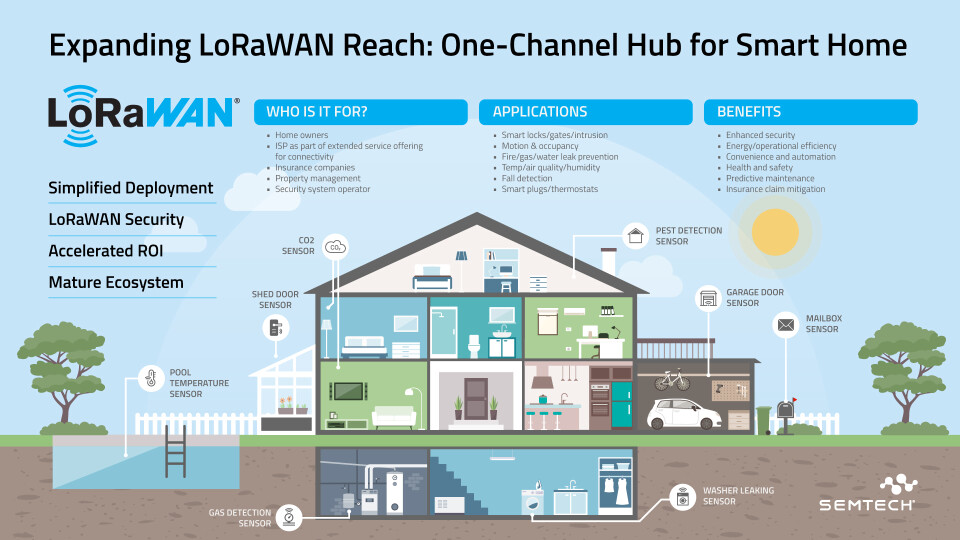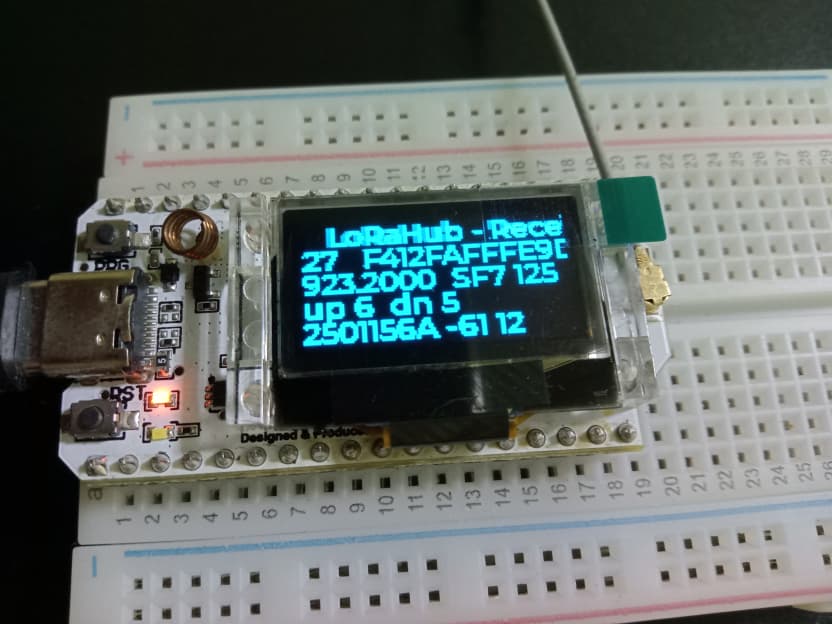That’s a lot of downlinks for such a small number of uplinks …
Whats the difference between a ‘One Channel Hub’ and a ‘Single channel packet forwarder’ ?
Glad you asked and to save on reading all the puff pieces on how it will save puppies:
A One Channel Hub is an official configuration with a single standard radio (SX12xx, LR1xxx, etc) set to one frequency & spreading factor as per the regional settings published by the LoRa Alliance. It uses the standard packet forwarder implementation.
You can register it on TTS by selecting the One Channel option for a region.
Devices are registered in a similar manner using the regions One Channel option. The firmware needs telling what frequency & SF to join at and be neutered in all ADR respects so that it doesn’t change anything.
The use case is aimed at a location with the need for half a dozen devices that don’t justify a full gateway. Something like a retail outlet that needs a few temp/humidity sensors and perhaps some power/temp monitoring of chill cabinets. If you’ve 2,450 branches as Gregs does in the UK, this makes an IoT install far more attractive in terms of capital costs.
If by chance a rogue or third-party device happens to join via the OCH, I believe the LNS will send a channel plan that means it is fixed to the single frequency/combo so it will carry on working. But as I’m still deep in the weeds of LoRaWAN Relay testing, I’ve not tried to break OCH yet so can’t be sure.
My node is still multi channel. Is it relevant?
A multi-channel node is irrelevant.
It’s the gateway showing almost as many downlinks as uplinks that’s of interest. How come so many downlinks?
So if say in an urban area lots of ‘homes’ go for the low cost option and install a OCH.
What then happens if someone in that area does a good thing for the community and sets up a proper LoRaWAN server ?
Peace and calm ?
As most home automation devices are based on WiFi, Zigbee or Matter and LW is hardly an out the box experience, I’m not sure this is likely to be the issue.
I also have a level of confidence that such scenarios would have been thought through. The spec has been work in progress for a while so you’d like to think that someone has tested such stuff.
As I said, I’ve not got to OCH yet so I can’t do a definitive test for you. Today was “fail to solder SMD radio modules” day.
But from my understanding of the configuration, any OCH configured devices will be able to use any OCH in range plus the full gateway as it will look like a normal uplink. Any OCH devices joining that are registered as OCH will retain the OCH settings. Any full fat devices will use the full fat gateway as it will take a lot of attempts before it got to a lower SF that is set for the OCH.
Nice.
Can you post the build you did?
OP already did, it’s the link in the first post.
Does he work for Semtech? As that repository belongs to them
Not that I’m aware, but how does that matter, that’s where you get the code from and if you dare to look at the info, you’ll see that Semtech have provided a build for which hardware???
It’s on GitHub and it’s open source so just do it as Nike would say!
Formal info at REDACTED - please use the link, the whole link and nothing but the link like you’ve done below - given it’s just the same as your first post, peeps can use that.
There are two application notes.

